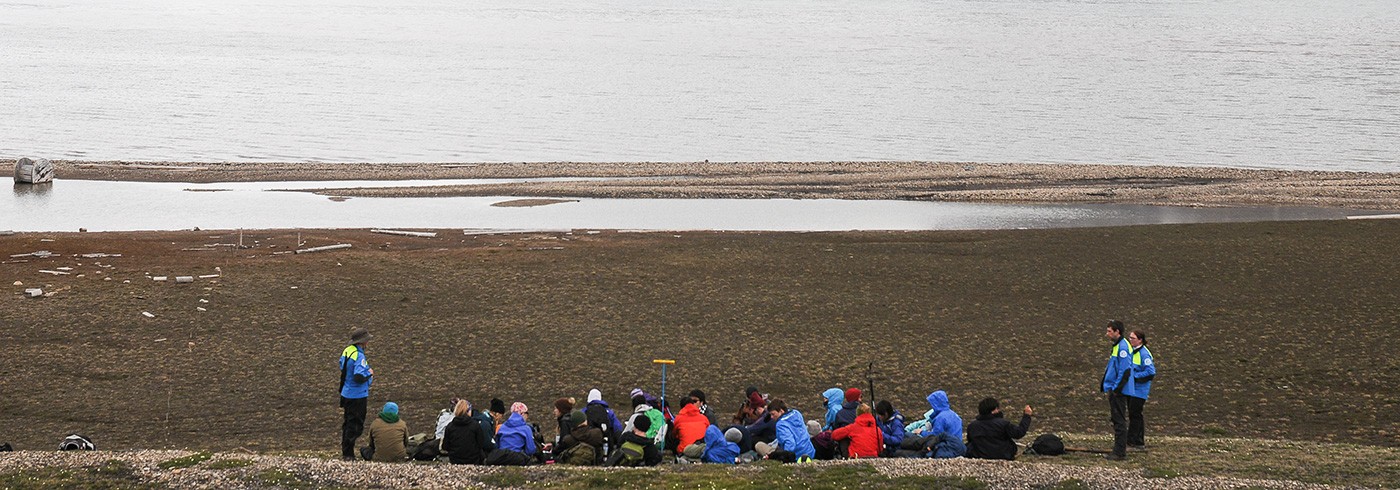Environment and society in a changing Arctic
27 June 2013 - 14 July 2013On this field trip to Svalbard, data were collected for the Mistra-funded project Assessing Arctic Futures. At the same time, students from KTH Royal Institute of Technology and the University of Illinois learned about changes in the Arctic.
This expedition treated questions of how different actors construct visions of the future Arctic and why. The Arctic is increasingly envisioned as a future arena for shipping, mining, and fossil fuel extraction. By building an understanding of how and why Arctic future visions are constructed and realized from a long-term perspective, we will be better equipped to deal with current challenges in the region.
We conducted research at two locations at Svalbard (Billefjorden and Longyeardalen) as these sites let us compare how competing actors envision and influence the future using rhetoric and built environments, and also because Billefjorden offers good opportunities to educate students about climate change and the environmental impacts of mining.
The researchers and students conducted semi-structured interviews using digital recorders, and documented built environments using digital photography and GPS.
The results indicate that actors on Svalbard frame their future visions in relation to the climate change debate. On one hand, companies want to benefit from the opening of the Arctic to shipping and extraction, making Svalbard a hub servicing these activities. On the other hand, actors express a desire to protect the environment by developing environmentally friendly technologies and by remaking abandoned coalmines into platforms for climate science and heritage tourism.




